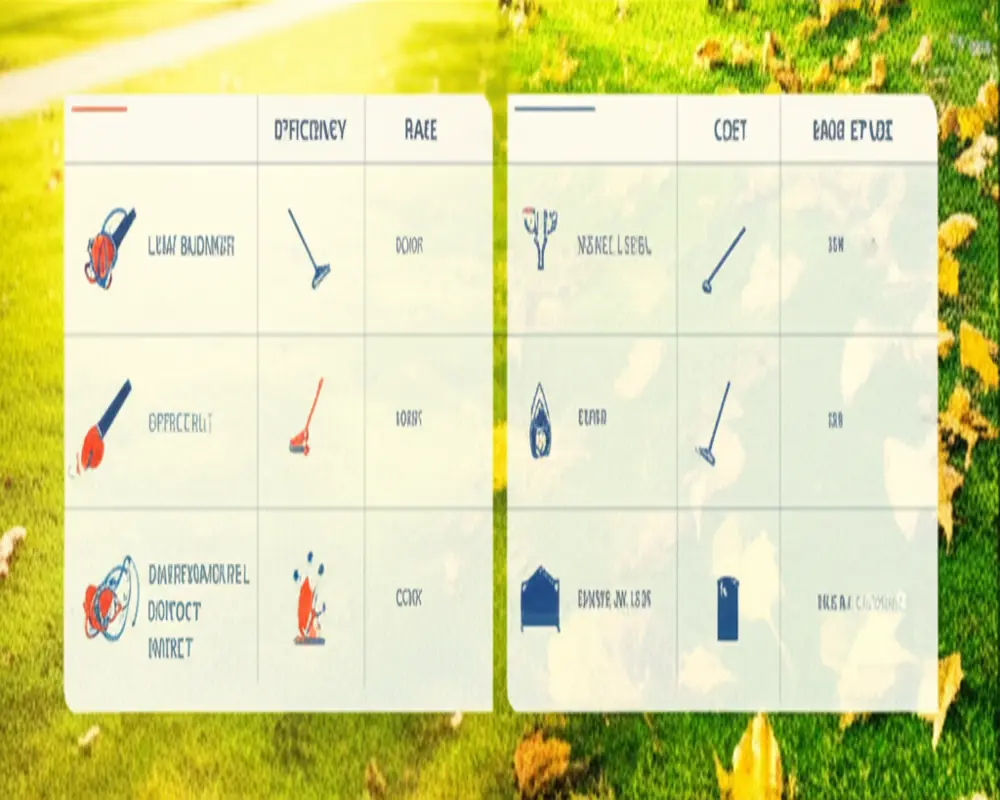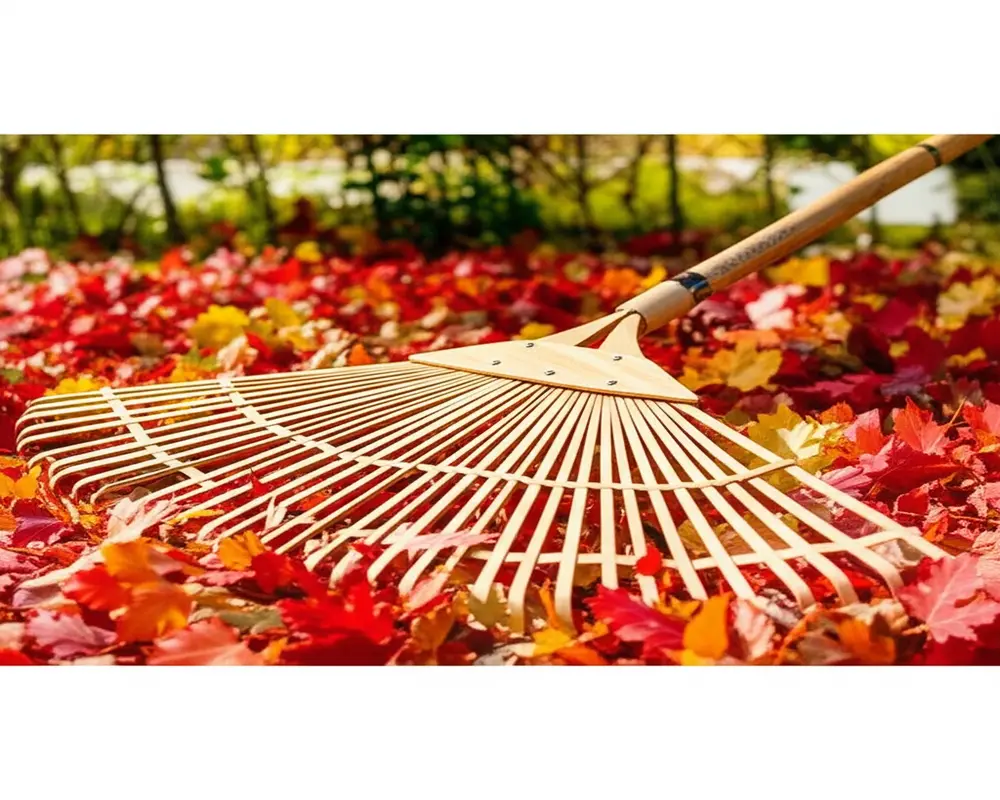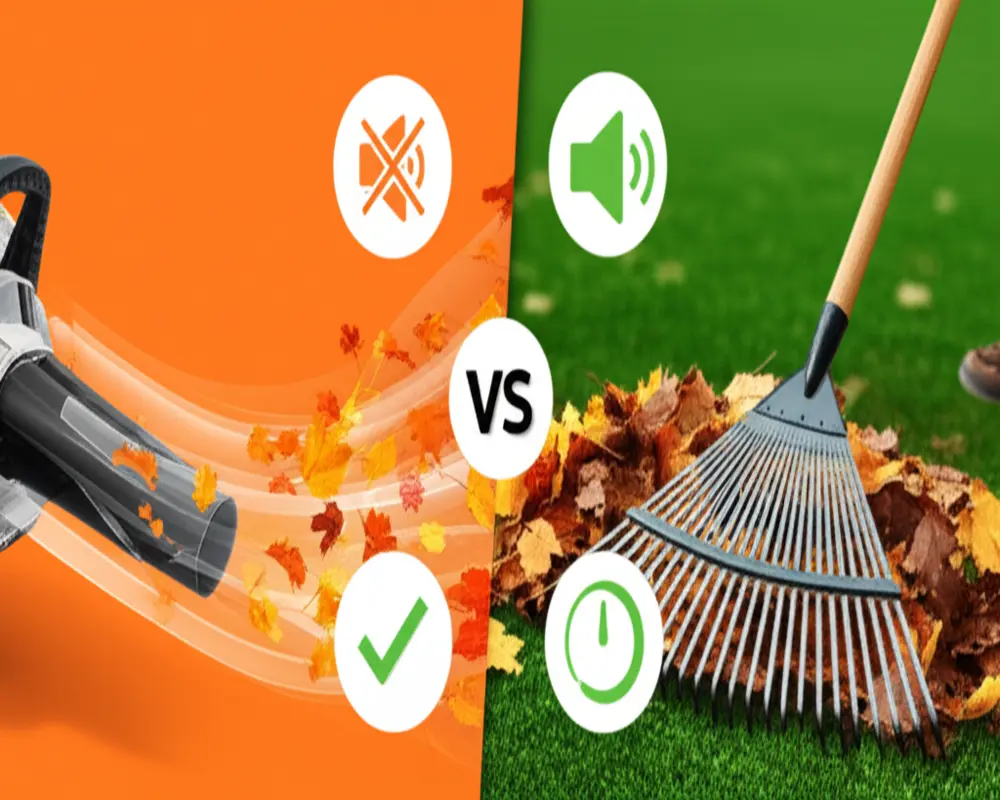Leaf Blower vs Rake: Which Tool is Best for Your Yard in 2025?
Managing fallen leaves is an annual yard challenge that many homeowners face with varying approaches. The crisp rustle of leaves in autumn signals beauty but also the need for cleanup. Two primary tools dominate this task: the leaf blower and the rake. Each offers distinct advantages and drawbacks, influencing efficiency, environmental impact, and user experience. This comprehensive analysis aims to help you decide which tool suits your yard best in 2025, considering practical factors and expert insights.
Quick Glance: Leaf Blower vs. Rake Comparison Table
Before we delve into details, here’s a straightforward comparison of the two tools across essential attributes:
| Attribute | Leaf Blower | Rake |
|---|---|---|
| Speed | Fast, clears large areas quickly | Slower, labor-intensive |
| Physical Effort | Low, minimal exertion | High, requires manual work |
| Cost | Higher upfront and maintenance costs | Low cost, minimal upkeep |
| Noise Level | High; may violate local ordinances | Silent, no noise pollution |
| Environmental Impact | Emits pollutants and dust | Eco-friendly, zero emissions |
| Versatility | Effective on various debris types | Best for dry leaves; limited on wet or heavy debris |
| Best Use Cases | Large yards, quick cleanup | Small to medium yards, detailed work |
| Maintenance | Requires regular service and fuel or battery charging | Minimal maintenance |
| Storage | Compact but needs careful storage | Bulky, requires space |

Understanding Leaf Blowers: Power, Convenience, and Considerations
What is a Leaf Blower?
A leaf blower is a powered gardening tool designed to move leaves and debris by generating a strong airflow. It comes in multiple forms: gas-powered models that offer high power but emit fumes; electric corded versions that provide consistent energy without emissions but limited by cord length; cordless battery-operated blowers that balance mobility and convenience; and configurations such as handheld, backpack, or walk-behind styles suited for different yard sizes and user preferences.

Advantages (Pros)
Leaf blowers excel in speed and efficiency, especially over expansive areas, reducing the time spent on yard cleanup. They demand less physical exertion, sparing users from bending or repetitive motions common with manual raking. The versatility of leaf blowers extends beyond leaves—they can clear grass clippings, light snow, and other debris. Their airflow can reach difficult corners and tight spots, enhancing thoroughness in cleanup tasks.
Disadvantages (Cons)
Despite their power, leaf blowers contribute to noise pollution, often exceeding 70 to 90 decibels, which can disturb neighbors and violate local noise ordinances. Gas-powered models emit pollutants that adversely affect air quality and contribute to environmental degradation. They entail higher initial investments and ongoing maintenance costs, including fuel, battery replacements, and mechanical servicing. Moreover, leaf blowers lack precision in delicate garden areas, risking damage to plants or soil. Safety concerns also arise from flying debris, necessitating protective gear.
Understanding Rakes: Tradition, Eco-Friendliness, and Exercise
What is a Rake?
A rake is a simple, manual gardening tool used to collect leaves and debris through physical effort. It typically consists of a long handle with a set of flexible tines. Leaf rakes feature wide, fan-shaped tines optimized for gathering leaves, while garden or bow rakes have sturdier, shorter tines suitable for soil and heavier materials.

Advantages (Pros)
Rakes operate silently, generating no noise pollution, making them ideal for noise-sensitive neighborhoods. They have zero environmental emissions, aligning with eco-conscious gardening practices. Their low cost and straightforward upkeep make them accessible for all budgets. Using a rake provides wholesome physical activity, promoting health through moderate exercise. Rakes offer precise control in confined or delicate garden areas and boast reliability due to their simple design.
Disadvantages (Cons)
The manual nature of raking demands significant physical effort, which can be strenuous for some users. Cleanup with a rake is time-consuming, especially in large yards. Wet leaves or certain debris types can be challenging to manage effectively. Rakes have limited reach in tight or hard-to-access areas. Additionally, their bulky shape can make storage inconvenient for those with limited space.
Detailed Comparative Analysis
Efficiency & Time Investment
Leaf blowers dramatically reduce the time required to clear large areas, often completing tasks in a fraction of the time a rake would need. For example, a medium-sized yard of 10,000 square feet (approximately 930 square meters) can be cleared with a blower in an hour or less, while raking might take multiple hours. However, rakes offer superior precision for small or intricate areas and allow for selective leaf removal.
Physical Demands & Ergonomics
Operating a leaf blower exposes users to vibrations and the weight of the device, which can cause arm fatigue over extended periods but generally minimizes bending or strenuous motion. Raking requires continuous bending, twisting, and repetitive arm movements, which can lead to muscle strain, but also provides cardiovascular exercise benefits. Ergonomically designed rakes and blowers can alleviate some discomfort, but the fundamental physical effort differs significantly.
Noise Impact & Community Relations
Leaf blowers produce noise levels typically ranging from 65 to 90 decibels, which can disturb nearby residents and wildlife, especially when used during early morning or late evening hours. Many municipalities have enacted regulations restricting blower usage times or banning gas-powered models. Rakes operate silently, ensuring peaceful yard work without disturbing the community or pets.
Environmental & Ecological Footprint
Gas-powered leaf blowers contribute to air pollution by emitting hydrocarbons and particulate matter, negatively affecting local ecosystems and human health. Electric models reduce emissions but still consume electricity. Leaf blowers can also disrupt soil and harm small wildlife by blowing away beneficial organic matter. Conversely, rakes have no emissions, promote natural composting of leaves, and preserve soil integrity, making them a sustainable choice for environmentally conscious gardeners.
Cost of Ownership
Leaf blowers involve higher upfront costs, ranging from $50 for basic electric models to over $300 for advanced gas-powered or backpack versions. Ongoing expenses include fuel, batteries, and maintenance. Rakes, in contrast, are affordable, with prices typically between $10 and $50, and require minimal upkeep. The economic consideration often hinges on the yard size and frequency of use.
Versatility & Use Cases
Leaf blowers perform well on dry leaves and a variety of yard debris, including grass clippings and pine needles. Some models handle light snow removal. However, they are less effective on wet, heavy leaves, where rakes can provide better control. Rakes excel in small to medium-sized yards and landscaped areas needing gentle handling. In gravel or delicate garden beds, rakes offer more precision without displacing soil or stones.
When to Choose a Leaf Blower vs a Rake
Opt for a Leaf Blower if:
- You own a large yard with significant leaf volume.
- Time constraints demand quick cleanup.
- Physical limitations make manual labor difficult.
- You need to clear various types of debris beyond leaves.
- Local noise regulations allow blower use.
Opt for a Rake if:
- Your yard is small to medium-sized.
- You prioritize quiet, eco-friendly, and budget-conscious methods.
- Precision and care for landscaping are important.
- You enjoy physical activity during yard work.
- Strict noise ordinances are in place.
Hybrid Approach
Many gardeners find combining a blower and rake effective—using the blower to gather leaves into piles quickly, then employing the rake for detailed collection and disposal. This approach balances speed, precision, and environmental considerations.
Key Factors Before Deciding
Your choice between a leaf blower and a rake depends on several considerations:
- Yard Size & Landscaping: Larger, open yards favor blowers; smaller, intricate gardens benefit from rakes.
- Leaf Volume & Type: High volumes and dry leaves suit blowers; wet or heavy leaves may require rakes.
- Noise Regulations: Check local laws regarding blower use to avoid fines.
- Personal Physical Health: Consider your physical ability and preference.
- Budget & Costs: Evaluate upfront and maintenance expenses.
- Environmental & Personal Values: Weigh emissions and ecological impact.
- Storage Needs: Assess space for storing tools safely.
Tips for Effective Leaf Clearing
To maximize efficiency and minimize effort:
- Work with the wind direction to aid leaf movement.
- Divide large yards into sections for manageable cleanup.
- Wear appropriate safety gear, including gloves, and eye and ear protection, especially when using leaf blowers.
- Consider mulching leaves to enrich soil and reduce waste.
- Clear leaves promptly to prevent buildup and easier handling.
Conclusion: Making the Right Choice
The debate of leaf blower vs rake has no one-size-fits-all answer. Each tool has trade-offs balancing speed, effort, noise, cost, and environmental impact. Your decision should align with your yard’s unique demands, local regulations, and personal values. Whether you favor the convenience of a leaf blower or the eco-friendliness of a rake, informed choices will lead to a cleaner, healthier yard.
For readers interested in expanding their gardening tool knowledge, exploring topics like hand cultivators or pruning shears can enhance overall garden maintenance skills.
FAQs
Is a leaf blower better for all yard sizes?
Leaf blowers are generally more efficient for large yards, but small yards with delicate landscaping often benefit from rakes.
Can leaf blowers be used in neighborhoods with noise restrictions?
Many areas restrict blower use during certain hours or ban gas-powered models due to noise. Check local regulations before use.
Are electric leaf blowers more environmentally friendly?
Electric blowers emit no direct emissions and are quieter but still require electricity, which may come from non-renewable sources.
How can I reduce the environmental impact of leaf clearing?
Using rakes or electric blowers, mulching leaves, and minimizing fuel-powered blower use helps reduce environmental impact.
What safety precautions should I take when using a leaf blower?
Wear gloves, eye protection, and hearing protection. Avoid blowing debris toward people, pets, and fragile plants.

